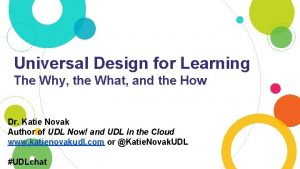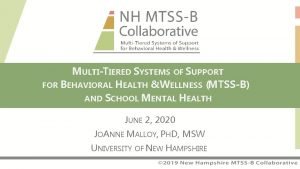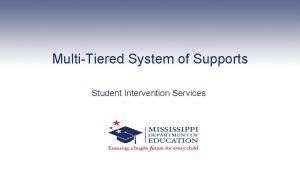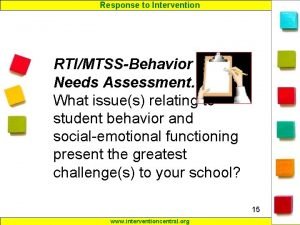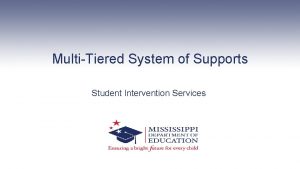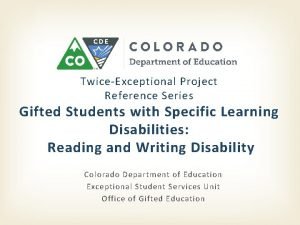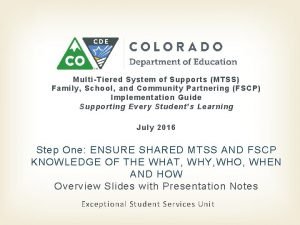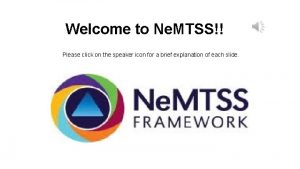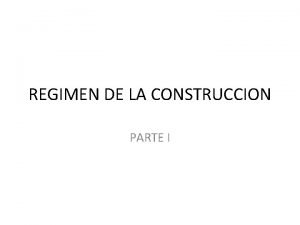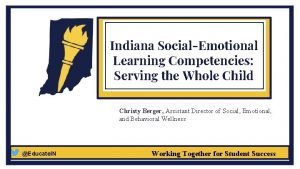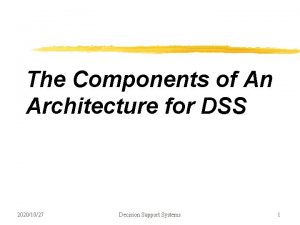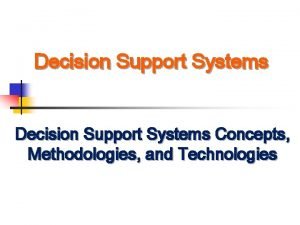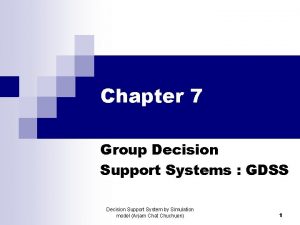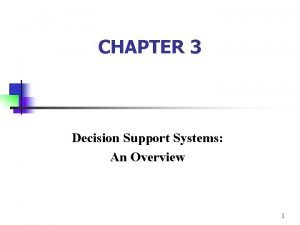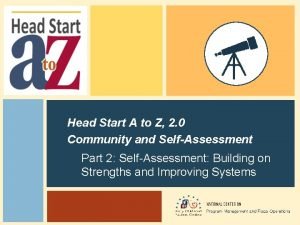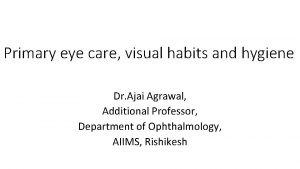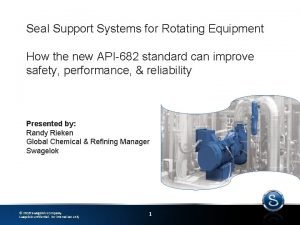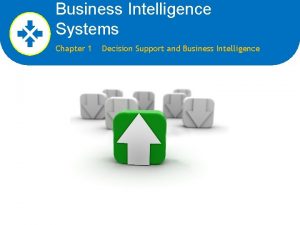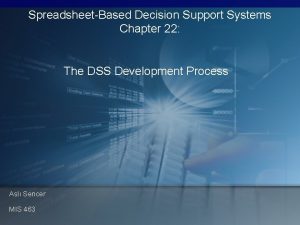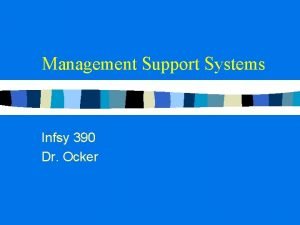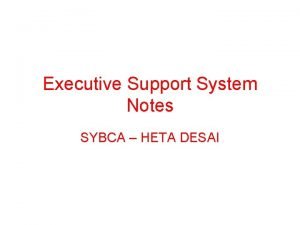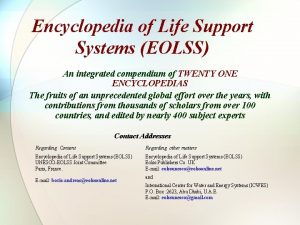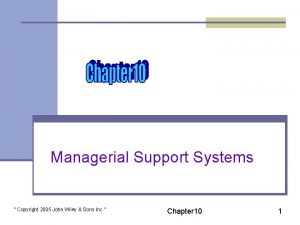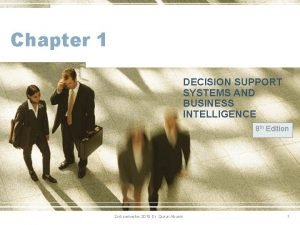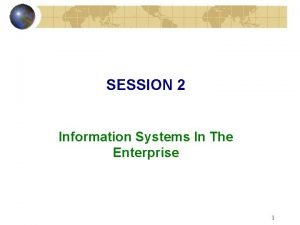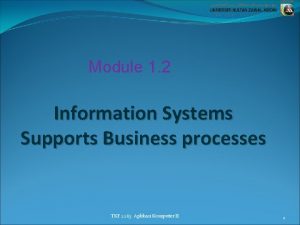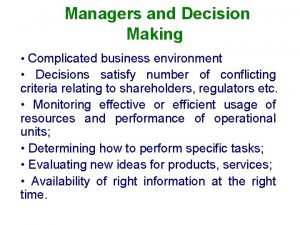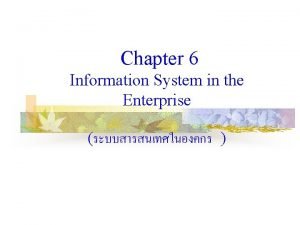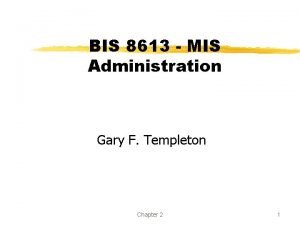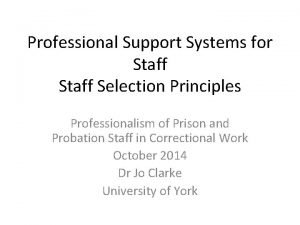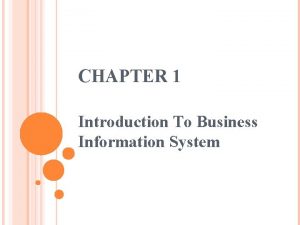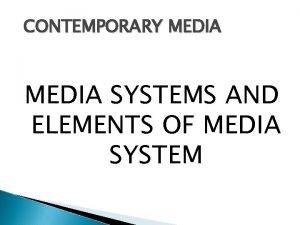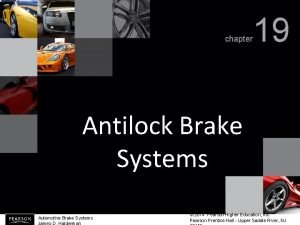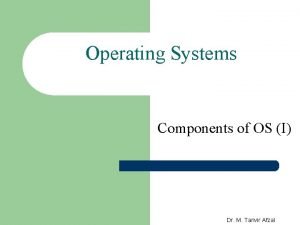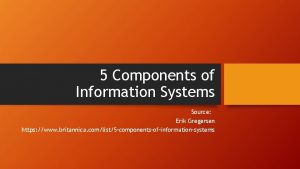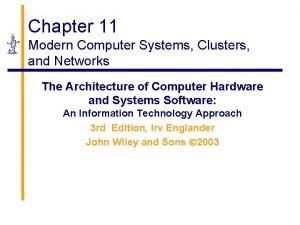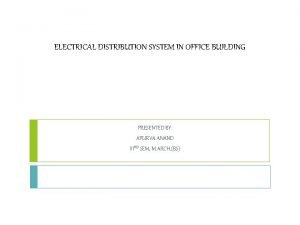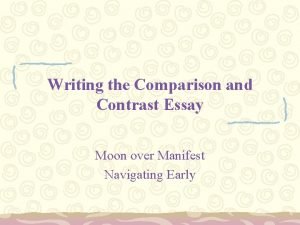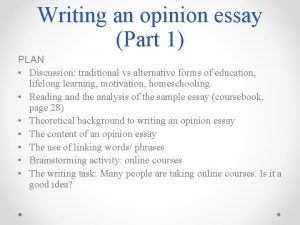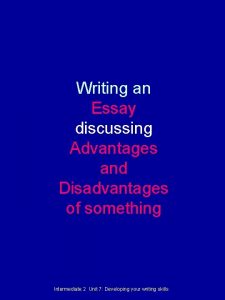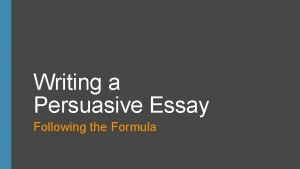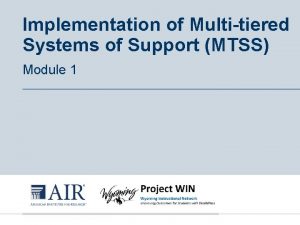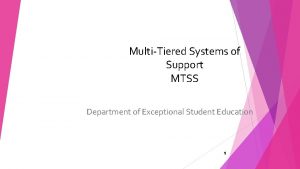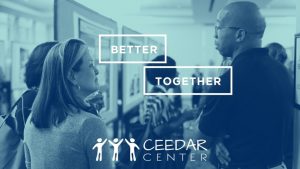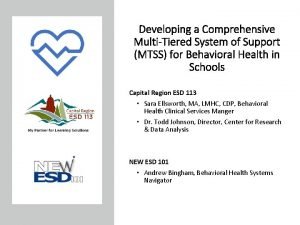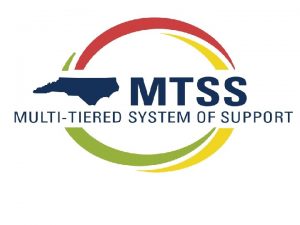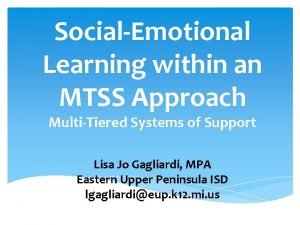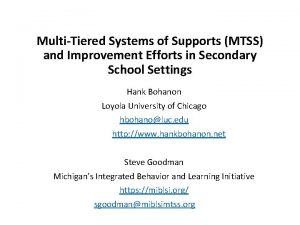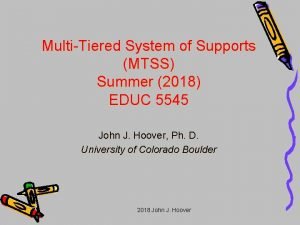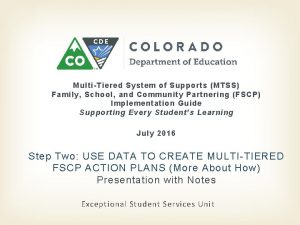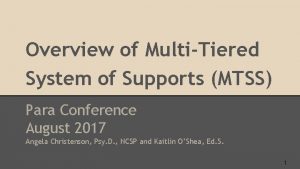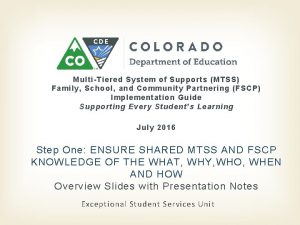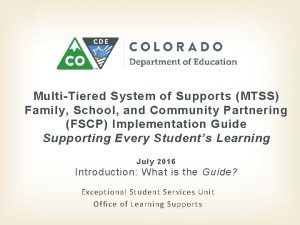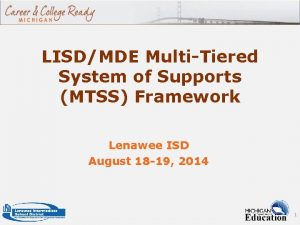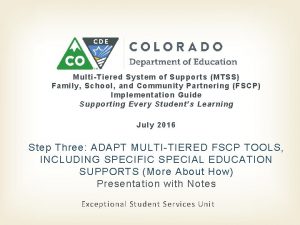START Primary Components MultiTiered Systems of Support MTSS































































- Slides: 63


START Primary Components


Multi-Tiered Systems of Support (MTSS) For Students with ASD Targeted Universal Supports Le ve lo f in div idu ali za tio n Intensive Supports Core Curriculum & Instructional Strategies

START PRINCIPLES (Universal Supports) • Positive Behavior Support: FRONTLOAD SYSTEMS • Opportunities in Integrated Environments: LRE • Accommodations / Differentiation • Access to General Education • Use the ASD to Student’s Advantage • Focus on Independent, Engagement and Socialization Skills (PIVOTAL) • Implementation of Evidence-Based Practices (EBP) • Peer to Peer Support • Effective Use of Parapros / Adults • TEAM Approach • Focus on Improved Outcomes

MEETING MECHANICS Assign Responsibiliti es Problem Identificati on Problem Specificatio n Brainstorm Implementation Variables Cluster/ Prioritize

Passports http: //www. gvsu. edu/autismcenter/passport-216. htm

Special Education Law

OUR DECISIONS HAVE TO ALIGN WITH: • THE LAW • THE RESEARCH • THE DATA

Individuals with Disabilities Education Act (IDEA) https: //sites. ed. gov/idea/ • FAPE • LRE

FAPE Case Law What Does the “Appropriate” Mean? Rowley v. Hendrick Hudson Dist. (USSC 1982) 1. The state has "complied with the procedures set forth in the Act. " (ex. procedural safeguards / legal requirements, etc. ) 2. The IEP is “reasonably calculated to enable the child to receive educational benefits. ” ---interpreted as “some progress, ” “more than negligible / minimal”, but not require maximizing potential---

What is FAPE? IDEA 2004 An educational program that is individualized to a specific child, designed to meet that child's unique needs, provides access to the general curriculum, meets the grade-level standards established by the state, and from which the child receives educational benefit. (extrapolated from case law and 20 U. S. C. § 1401(14) and 34 CFR 300. 320 through 300. 324 re IEP, and 300. 17 re FAPE definition as special education and related services per IEP) Ed Benefit = progress over time (IEP goals, curriculum, social, communication, behavior, etc. ) To provide FAPE, schools must provide students with an education that prepares the child for further education, employment, and independent living. 20 U. S. C. § 1400(c)(5)(A)(i)

The Test for LRE “To the maximum extent appropriate, children with disabilities…. are educated in the general education classroom with children who are not disabled…” …. and that special classes, separate schooling, or other removal of children with disabilities from regular education environment occurs only if the nature or severity of the disability is such that education in regular classes with the use of supplementary aides and services cannot be achieved satisfactorily. ” 34 C. F. R. § 300. 114

Recent Updates • ADA Rights • Dear Colleague 2015 • Endrew 2016 (appropriately ambitious)

P t ODE en atem 0 St 80/8 Continuum of Services MI Thresholds for Restriction SPP Indicator 5: Educational Environments 2018 Targets General Education Classroom 80%+ Target 64. 25% General Education Classroom 40 -79% << Less Restrictive General Education Classroom <40% Target 11. 4% Separate Facility Target 5. 5% More >> https: //osep. grads 360. org/services/PDCService. svc/Get. PDCDocument. File? file. Id=20476

Writing Goals (Objectives / Benchmarks) UTILIZING & Under what conditions Student Will…. At what level / degree (criteria)? The IEP Form: ADD: by what date; on what assessment? Does not have line for: Utilizing

Research

National Professional Development Center NPDC (http: //autismpdc. fpg. unc. edu/)

Resources for EBPs • NPDC (http: //autismpdc. fpg. unc. edu/) • National Standards Project (http: //www. nationalautismcenter. org/nationalstandards-project/phase-2/) • AIM (Autism Internet Modules) by OCALI (http: //www. autisminternetmodules. org) • AFIRM (NPDC) http: //afirm. fpg. unc. edu/afirm-modules • Association for Science in Autism Treatment (http: //www. asatonline. org/treatments_desc. htm )

Rationale for Segregated Programming Simply Not Supported • Study: 7 years; 6 self-contained; 5 districts; 3 states • Rationale: – Community (i. e. more protective environment) • Not purposefully created or given much attention • Evidence that it, in fact, was the opposite – Less Distractions: SC more frequent; more severe – Curriculum and Instruction: (structure; individualized) • Less structure than gen ed • Context-Free / Meaningless Curriculum (i. e. little inquire-based / cooperative learning; often “seat work; ” no connection to gen ed) • No Specially Trained Instructor – mostly parapros – Behavior Supports: Confrontational staff; Few attempts to understand or respond to function; Contingent removal; Use of time out / restraints Does Self-Contained Special Education Deliver on Its Promises? A Critical Inquiry Into Research and Practice. Causton-Theoharis, Orsati, Cosier, (2011)

LRE=General Education There is STRONG Evidence that Student with “Extensive Support Needs” – Acquire skills and content knowledge (including literacy) in general education with rigorous instruction and UDLbased adaptations (e. g. differentiated instruction; universal supports, literacy supports (Kluth)) – Are BEST served by educational teams that approach their education with the intent of finding solutions to access and learning barriers rather than alternative placements. Involvement and Progress in the General Education Curriculum for Students With Extensive Support Needs: K-12 Inclusive-Education Research and Implications for the Future. Ryndak, Lewis & White, (2013).

Kurth & Mastergeorge, 2010 • 15 Ss w/ ASD (not AS) – 12 males • 7 -9 th grade; 12 -15 years old • 7 spent >80% day in Gen. Ed; math and reading instruction in Gen. Ed • 8 self-contained spent >50% in Sp. Ed; math and reading instruction in Sp. Ed • Measures: – Cognitive Gen. Ed mean 64. 9; Sp. Ed mean 60. 0 – Adaptive Gen. Ed mean 44. 4; Sp. Ed mean 42. 3 – Academic—WJ 3 • Broad Reading: Gen. Ed mean 67. 6; • Broad Writing: Gen. Ed mean 83. 6; • Broad Math: Gen. Ed mean 77. 4; Sp. Ed mean 13. 1 Sp. Ed mean 14. 1 Sp. Ed mean 8. 5 Academic and Cognitive Profiles of Student with Autism: Implications for Classroom Practice and Placement. International Journal of Special Education, 25 (2), 8 -14.

Visual Schedules and Supports Instructional Science

The Schedule Matrix Schedule All Major Transitions / Subjects Expectations & Instructional Outcomes for ALL Students Target Student’s Current Level of Skill Compared to Peers Current Supports, Strategies, & EBPs in Place Potential Goals / Strategies Needed Independence Visuals Social Communication Systems Where do skills break down? Communication Academic Peer to Peer Support Engagement Differentiation Behavioral PBIS Strategies EBPs When Student is: -not engaged -not independent -has behavioral challenges

Schedule – Embed Preferred Interests To Do All Done Math P. A. Choice Social Studies P. A. Choice English P. A. Choice Science CAUT ION

The Schedule Implementation Variables • Student is in one of THREE places at any given time of the day: Schedule Break Crisis

BREAK: Implementation Issues • PURPOSE of BREAK – Time w/out demands – De-escalate BREAK • GUIDELINES: – – Activities / Choices Result in De-escalation Benign in Reinforcing Value / NOT Highly Preferred Student Initiated – Staff Prompted (TEACH) Break Procedures BREAK VS. Choice Time

Components of Effective Instruction The LEARN UNIT (DTT) Responsive Feedback PROMPT / REINFORCE Request Response Discriminative Stimulus Sd • Instruction • Environmental Stimuli Reaction

Types of Prompts • Physical Prompts: Most intrusive / restrictive type of prompt. – Full physical guidance to a partial physical prompt such as a light touch to encourage a response. • Verbal Prompts: Additional verbal instruction to perform the required action. • Visual Prompts: – Object Prompts: The object acts as a stimulus for the response. – Gestural Prompts: A point or other gesture to prompt the expected response. – Pictorial: A picture or other two dimensional representation (words, symbols, etc. ) acts as a stimulus for the response. – Positional Prompts: Positioning the correct response in a way that the student is more likely choose it (often used in direct instruction situations). – Model Prompts: Demonstration of the behavior to be performed (i. e. , showing how to perform the behavior/action).

Prompting Procedures (NPDC EBP Brief: http: //autismpdc. fpg. unc. edu/content/briefs; AIM Modules: http: //www. autisminternetmodules. org/) • Instruction vs. Prompting: – First time given = instruction; – Every support after to elicit the response = prompt • Prompt = “help” to teach the correct response • Goal of prompt is to elicit correct response – Repeating instructions = verbal prompts – Multiple prompts encourages inattention / guessing • Use least intrusive prompt necessary to get the correct response

Prompting Procedures • Levels of prompting (amount of assistance) – Most-to-Least Prompting • ERRORLESS LEARNING • For NEW Skills / Minimizes Errors • High risk of prompt dependency – Least-to-Most Prompting • Use for performance deficits and when learner begins to perform the skill • TIME DELAY: Give time enough to produce the response but not enough to allow error / produce behavior challenges • Reinstate prompts if learner regresses; doesn’t respond; begins to respond incorrectly, etc. • Fade prompts as quickly as possible – Avoid prompt dependency / Ensure independent responding • Fading Prompts: – Say softer – Use less force – Model PART and wait

Create Prompt Hierarchy LEAST Visual Intermediate Gestural Controlling Model Partial Physical

Effectively Teaching Learning Level Prompt Level Differential Reinforcement Level New Skill Most Prompting Strong to Fade Mastered Skill Least Prompting Natural

Behavioral Science Functional Behavioral Assessment Behavior Response Scripts

The ABC Paradigm ANTECEDENT BEHAVIOR CONSEQUENCE BEFORE DURING AFTER

Types of Sr and Punishment Reinforcement Positive = Give Negative = Remove POSITIVE Sr NEGATIVE Sr (ESCAPE) Punishment POSITIVE Punishment NEGATIVE Punishment

CAUTION: Contingent Reinforcement • Do not use highly preferred items / interests • Earn by amount of time or items rather than earn it or not

Functional Behavioral Assessment INTENSIVE (A) Meeting Mechanics / Comprehensive FBA (B) Functional Behavioral Analysis: --Hypothesis Testing --Changing Individual Variables --Variable Limited Environments TARGETED ·Meeting Mechanics / Practical FBA ·Using Function to Develop Interventions UNIVERSAL ·Think in ABC / FBA to solve immediate problems ·Universal Supports w/ Fidelity ·Meeting Mechanics: Frontloading

FBA: Data-based Problem Solving Process Goals & Purpose of FBA 1. Establish BASELINE 2. Determine variables associated w/ behavior? 3. Identify potential function(s) 4. Develop a hypothesis FOUNDATION FOR A BEHAVIOR PLAN

Components of High Quality FBA Components / Outcomes • Clear Description of the Behavior • Setting Events & Antecedents that predict when the behavior will and will not occur • Consequences that maintain the behavior • Summary Statement (Hypothesis / FUNCTION) Activities • Informants – Interviews – Rating Scales – Checklists • Systematic Direct Observation – Scatterplot – ABC • Systematic Manipulation of Conditions (FA— Functional Analysis)

Basic Steps: Practical FBA (DASH) • Describe Behavior • Ask Others • See the Behavior • Hypothesis Mi. BLSi, 2013

FBA & BIP Development Summary Statement ANTECEDENT BEHAVIOR for PBIS BEFOREFoundation DURING CONSEQUENCE Plan. AFTER

High Quality PBIS Plan 1. PREVENT 2. TEACH challenging behavior from occurring in the first place…. systems and new / replacement behaviors using effective teaching techniques 3. RESPOND in ways that: a. Reinforce new (replacement) behaviors Antecedent-Based Interventions Reinforcement / Differential Reinforcement b. Do not reinforce

Incredible 5 -Point Scale Level of Escalation 5—Aggression 4—Anger 3—Agitation 2—Anxiety 1—Green What the Student Says and Does Physical aggression toward self/others Verbal aggression, including threats of physical harm Noticeable increase or change in behavior Slight change in behavior Appropriate behavior and following expectations Adapted from Kari Dunn Buron & Mitzi Curtis

Adaptations Level 1 Engagement Level 2 Anxiety Level 3 Agitation Level 4 Anger Level 5 Aggression Level 6 Recovery What the student says and does What the staff says and does

Educational Strategies

Differentiated Output Hierarchy • • • Open Ended Questions Visual Organization Strategies Closed Strategies Choice Strategies Yes / No Strategies

Principles for Promoting Inclusive Literacy Practices • Maintain High Expectations • Provide Models of Literate Behavior (Peer to Peer) • Elicit Students’ Perspectives (Use Preferred Interests) • Promote Diversity as a Positive Resource -- LRE • Adopt “Elastic” Instructional Approaches (e. g. Pacing) • Use Flexible Grouping Strategies • Differentiate Instruction

Methods to Enhance Literacy “Elastic” Procedures • Visual supports, maps, and supplemental materials / instruction • Priming for background knowledge • Peer – mediated instruction • Use of high interest materials • Engaging learners before, during and after reading • Use of Interactive books and PPT Carnahan & Williams, 2010; Carnahan, Williams & Haydon, 2009; Brown, Oram. Cardy & Johnson, 2013

Reading Instruction and Assessment within a Multi-Tiered System of Support (MTSS) Intensive Individualized Interventions Targeted Interventions Universal Interventions Few Micro-Level Sensitive to Small Changes Over Time Some Meta-Level (2 -3 X per mo) Progress Monitoring (e. g. CBM) All Macro-Level Annual Assessment (e. g. M-STEP; NWEA) UNIVERSAL DESIGN FOR LEARNING (Johnson & Street, 2013)

Is the Student Taking State / District Reading Assessment(s) Yes Carry On Yes No Proficient? Decision-Making Process Enhanced Assessment Proficient? No Yes No Teaching Strategies

Central Coherence Theory of Mind / Emotional Reciprocity Literal Thinking The Top 10: Executive Function Joint Attention & Social Engagement Characteristics of ASD that Impact LITERACY Restricted Interests & Motivation Repetitive Patterns of Behavior Language & Communicatio n Prior Knowledge Pragmatics

Secondary Transition

Regional Collaborativ e Networks: Secondary Transition Goal START Building Your Future (BYF) Projects BYF Technical Assistance (TA) BYF Intensive Training (IT)

Improving Post-Secondary Transition Outcomes • Access to Higher Education • Employment • Independent Living • Social Opportunities

Predictors / Outcomes Education Employment Indep. Living Career Awareness P (Potential) P -------- Community Experience -------- P -------- Exit Exam Requirements / High School Diploma Status -------- P -------- Inclusion in General Education M (Moderate) M M Interagency Collaboration P P -------- Occupational Courses P P -------- Paid Employment / Work Experience M M P Parental Involvement --------------- Program of Study -------- P -------- Self Advocacy / Self Determination P P -------- Self Care / Independent Living P P M Social Skills P P -------- Student Support P P P Transition Program M P -------- Vocational Education M M -------- Work Study -------- M -------- National Secondary Transition Technical Assistance Center (NSTTAC) http: //nsttac. org/sites/default/files/assets/pdf/ebps/Predictor. PPT_Jan 2013. pdf


The Spectrum of ASD Inclusive Employment Options Callahan, Michael (2009). Supported Employment / Customized Employment Matrix: Is “Competitive the new “Independent. ” Mark Gold & Associates Competitive / Demand Employment Customized Employment / Self. Employment Natural Supports / Reasonable Accommodations Does not need either SE or CE to become / stayed employed. Needs CE to become employed; Does not need SE to stay employed Supported Employment / Natural Supports Does not need CE to become employed; Needs SE to stay employed Needs both CE to become employed and SE to stay employed.

Customized Employment Customized employment means individualizing the relationship between employees and employers in ways that meet the needs of both. It is based upon an individualized determination of the strengths, needs and interests of the person with a disability, and is also designed to meet the specific needs of an employer.

Age-Appropriate Transition Assessment • Division on Career Development and Transition (DCDT) of CEC – Ongoing Process – Data on the individual’s needs, preferences, and interests – Related to the demands of current and future working, educational, living, and personal and social environments

Discovery Translates Daily Life / Experiences into Variables • Choices (interests & preferences) • Contributions (skills) • Conditions (frame challenges) • Connections (social capital

An Alternative Age-Appropriate Assessment V 3 Discovery • Vision: – Aligned with the principles of selfdetermination and person-centered planning • Vocational Profile: – Conditions for employment – Contributions to potential employers – Brain Blizzard / Social Capital Map • Visual Resume / State ID

The V 3 Discovery Steps 1. Preparation 2. Interviews & Surveys 3. Observations 4. V 3 Discovery Summary 5. Employment Development
 Decision support systems and intelligent systems
Decision support systems and intelligent systems Mtss and udl
Mtss and udl Mtss meme
Mtss meme Mtss-b
Mtss-b Symphonylearning com
Symphonylearning com Mtss needs assessment
Mtss needs assessment Mtss documentation packet
Mtss documentation packet Benefits of mtss
Benefits of mtss Mtss
Mtss Mtss nebraska
Mtss nebraska Trazabilidad mtss
Trazabilidad mtss Mtss infographic
Mtss infographic Indiana sel competencies
Indiana sel competencies It's gotta start somewhere it's gotta start sometime
It's gotta start somewhere it's gotta start sometime Triage start
Triage start Major detail and minor detail
Major detail and minor detail Components of dss
Components of dss Components of decision support system
Components of decision support system Gdss
Gdss Components of decision support system
Components of decision support system Head start management wheel
Head start management wheel Support activities and primary activities
Support activities and primary activities Why buccal shelf area is stress bearing area
Why buccal shelf area is stress bearing area Vertical health programmes
Vertical health programmes Who guidelines for primary eye care
Who guidelines for primary eye care Swagelok seal support systems
Swagelok seal support systems Decision support and business intelligence systems
Decision support and business intelligence systems Developing spreadsheet-based decision support systems
Developing spreadsheet-based decision support systems Management support systems
Management support systems Sybca
Sybca Encyclopedia of life support systems
Encyclopedia of life support systems Managerial support systems
Managerial support systems Decision support and business intelligence systems
Decision support and business intelligence systems Executive support systems
Executive support systems An example of a cross-functional business process is
An example of a cross-functional business process is Executive support systems
Executive support systems World oldest tree using
World oldest tree using Executive support systems
Executive support systems Decision support and expert systems
Decision support and expert systems Executive support systems
Executive support systems Professional support system
Professional support system Unit 5 international business m2
Unit 5 international business m2 Components of an operating system
Components of an operating system Components of os
Components of os File management in operating system
File management in operating system Business information systems definition
Business information systems definition Media system
Media system Kelsey hayes abs module diagram
Kelsey hayes abs module diagram Components of operating system
Components of operating system 5 components of information system
5 components of information system Computer systems components
Computer systems components The primary pigment colors are ____.
The primary pigment colors are ____. Advantages rising main distribution system
Advantages rising main distribution system Dicapine
Dicapine Embedded systems vs cyber physical systems
Embedded systems vs cyber physical systems Engineering elegant systems: theory of systems engineering
Engineering elegant systems: theory of systems engineering Moon paragraph
Moon paragraph Formal email
Formal email What is an expository sentence
What is an expository sentence Formal email for requesting information
Formal email for requesting information Opinion essay plan
Opinion essay plan Informal letter format
Informal letter format Discuss
Discuss How to write a counterclaim
How to write a counterclaim

